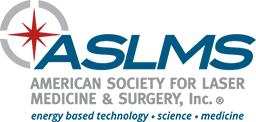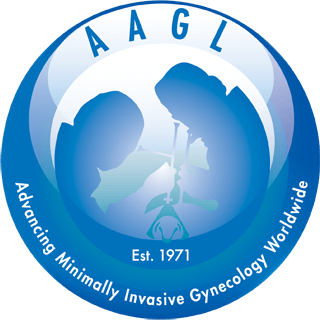Lichen Sclerosus Treatment with Laser + PRP and LichenLase
Lichen sclerosus is a chronic and often painful skin disorder affecting the genital area, but new advances are making it easier to manage. Laser combined with PRP (Platelet-Rich Plasma) offers a modern, minimally invasive option for women seeking relief and improved quality of life.
Laser and PRP for Lichen Sclerosus: A Breakthrough in Women’s Wellness
Lichen sclerosus is a distressing skin condition, especially when it targets sensitive genital skin. Traditional approaches, such as potent topical steroids, provide symptomatic relief but often fall short of long-term healing. Laser combined with PRP therapy is emerging as an innovative solution, using targeted energy to rejuvenate tissue and harnessing the healing power of the body's own platelets.
This minimally invasive treatment begins with an assessment to determine lesion depth. A fractional laser is then carefully applied to eliminate damaged tissue, stimulate collagen production, and encourage healthy skin regrowth. Platelet-Rich Plasma—derived from a small sample of the patient’s blood—is then used to enhance healing, reduce inflammation, and further improve tissue quality.
Most women benefit from remarkable symptom relief, minimal downtime, and a streamlined recovery. The synergistic effect of laser and PRP means many experience restored comfort, improved sexual function, and a reduction or total resolution of symptoms, often within a month of treatment..
How the laser + PRP approach works
- Evaluation & (when appropriate) biopsy – to confirm diagnosis and help tailor treatment depth and coverage. Biopsy is common when the picture is unclear or when cancer needs to be ruled out.
- Customized fractional laser – micro-columns of ablation are applied to affected skin to remove damaged tissue and trigger collagen remodeling while preserving surrounding skin for faster healing. Devices may include Er:YAG (2940 nm; “ProFractional”-type) or CO₂ fractional platforms. Dr. Dinc also offers a unique treatment protocol called LichenLase developed by Fotona with proprietary Piano and Smooth pulse modes.
- PRP application – a small sample of your blood is spun to concentrate growth factors; PRP is then applied/injected to the treated area to support healing and symptom relief.
Potential benefits (and what the evidence says)
- Symptom relief (itching, burning, dyspareunia) and improved skin quality reported in observational studies and some trials of fractional lasers ± PRP, especially in steroid-refractory cases.
- Not a replacement for first-line care. Ultrapotent topical corticosteroids remain the gold-standard initial therapy for vulvar LS; lasers/PRP are generally considered adjunctive or second-line and are still being studied.
- Mixed research findings. Some randomized and controlled studies show improvement with fractional CO₂ or Er:YAG; others found CO₂ monotherapy
not superior to standard care. Individual results vary.
Who is a good candidate?
You may be considered if you:
- Have biopsy-proven or clinically diagnosed vulvar LS with symptoms despite optimized steroid regimens, or you cannot tolerate steroids.
- Have realistic expectations and agree to continue routine vulvar care and follow-up exams.
Contraindications may include active infection, uncontrolled medical conditions, bleeding disorders, or recent isotretinoin use (device-specific). Your clinician will review details with you.
What to expect: step-by-step
- Consultation & planning – review history, meds, prior LS care; photography for baseline.
- Optional biopsy – if diagnosis is uncertain or malignancy needs exclusion.
- Treatment day – topical/ local anesthesia → fractional laser passes tailored to lesion depth and location → PRP applied/injected to the treated zones. Session time typically under an hour for focal areas.
- Aftercare – gentle cleansing, emollients, avoidance of friction/irritants, and short-term activity modifications per clinician guidance.
- Follow-up – symptom check, skin exam, and ongoing LS maintenance plan (often still includes individualized steroid or emollient regimens).
Recovery & timelines
- Downtime: Usually same-day home care; expect mild swelling, redness, or spotting for a few days.
- Results: Tissue remodeling evolves over several weeks; many studies assess outcomes around 1–3 months. Additional sessions may be recommended depending on response.
Safety & risks
Transient burning, swelling, spotting, or discomfort are common. Less common risks include infection, scarring, pigment change, or delayed healing. PRP is autologous, but bruising or soreness can occur at injection sites. Discuss your full medical history to minimize risk. (Device settings and candidacy determine individual risk.)
Important: LS is chronic. Even if symptoms improve after a procedure,
ongoing surveillance and
maintenance care are essential to reduce scarring risk and monitor for rare malignant transformation.
FAQs about Lichen Sclerosus treatment with Lasers + PRP
Is fractional laser + PRP a cure for Lichen Sclerosus?
No. LS is chronic. Laser/PRP may reduce symptoms and improve skin quality, but ongoing maintenance and follow-up remain important.
Is this the first-line treatment for LS?
No. High-potency topical corticosteroids are the gold-standard first-line therapy. Laser/PRP is generally considered adjunctive or second-line.
Who might consider laser + PRP?
Adults with vulvar LS who have persistent symptoms despite optimized steroid therapy or who can’t tolerate steroids may be considered after clinician evaluation.
How many sessions will I need?
Plans vary. Some centers structure a single session with follow-up, while others plan a series (e.g., 3–4) based on severity and response. Your clinician will personalize this.
How does the laser help?
Ablative fractional beams remove columns of damaged tissue and stimulate remodeling in between intact skin, supporting healthier architecture as you heal.
What does PRP add?
PRP concentrates your own platelets and growth factors, which may enhance healing and comfort when applied to laser-treated tissue. Evidence is promising but still evolving.
What’s the appointment flow?
Evaluation (± biopsy if indicated), treatment planning, laser session under local anesthesia, PRP application, and tailored aftercare with follow-up visits.
Does it hurt?
You’ll receive topical and/or local anesthesia. Expect temporary stinging, warmth, or soreness, typically manageable with recommended care.
How soon do results appear?
Early improvements may be noticed within weeks as remodeling occurs; many studies assess outcomes around 1–3 months.
Will I still need steroids after treatment?
Possibly. Many patients continue individualized maintenance regimens; your clinician will guide this based on symptoms and skin findings.
What are the risks?
Temporary swelling/redness, spotting, discomfort; uncommon risks include infection, pigment change, scarring, or delayed healing. PRP can cause bruising or soreness.
Is there downtime?
Most people resume light activities the same day with gentle vulvar care and friction avoidance as instructed.
Is the laser type important (CO₂ vs Er:YAG)?
Both have been studied with varying results; choice depends on clinician expertise, device availability, and your skin findings. Evidence is mixed across platforms.
Could this replace surgery for scarring/adhesions?
Laser/PRP may help tissue quality, but advanced scarring can require procedural release. Your clinician will advise based on exam.
Is a biopsy required?
Not always, but it’s commonly performed when diagnosis is uncertain, when response is atypical, or to exclude neoplasia
Can this be combined with pelvic floor therapy or sexual health counseling?
Yes—multidisciplinary care often helps address pain, fear-avoidance, and intimacy concerns alongside skin treatment.
How long do results last?
Durability varies. Because LS is chronic, maintenance strategies and periodic follow-ups are recommended even after improvement.
Can Lichen Sclerosus come back after treatment?
While there’s no permanent cure, laser-PRP therapy significantly reduces flare-ups and disease progression in most patients, especially with ongoing care.
Can I have this treatment if I’ve had surgery for Lichen Sclerosus?
Yes. Laser-PRP therapy is often used post-surgically to improve healing, reduce scarring, and prevent recurrence.
Can men be treated for Lichen Sclerosus with laser and PRP?
Absolutely. Lichen Sclerosus affects men (often on the foreskin or glans) and responds well to this regenerative approach.
Are there any side effects?
Side effects are rare and mild—temporary redness, minor swelling, or slight spotting. Serious complications are extremely uncommon when performed by a qualified provider.
Should the treatment be done early?
Early intervention is recommended since prompt therapy can prevent complications such as scarring and sexual dysfunction, improving long-term quality of life.
If you would like to learn more about our services we offer at Women’s Health and Cosmetic Services of Maryland, contact our specialists to schedule a consultation. We welcome women from all over Maryland including Baltimore, Annapolis and the Washington, DC, area.





